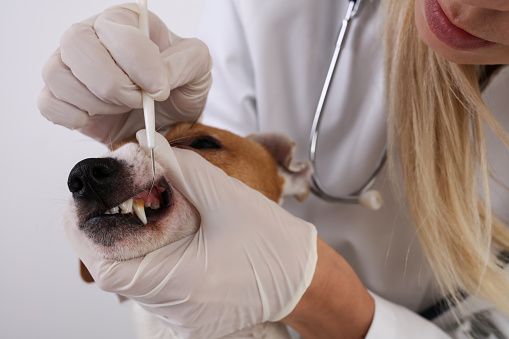Welcome to the beloved month of February, where the weather is unpredictable, the length of the month changes every 4 years, and the month that veterinary clinics around the world refer to as “Dental Month”!
Now personally, for me every month should be dental month, but once a year we decide to highlight our pet’s oral care. I’m sure most of you have been told at some point that your pet has some tartar build up on their teeth, and would benefit from a dental cleaning. Now I’m sure you’ve also wondered exactly what a dental entails. Well I’m here to tell you, that it involves a lot more than the name suggests, and that is why the price is more than what you may expect.
For starters, in order to be able to perform a thorough dental, the patient needs to be anesthetized. The reasons for this are many. For one, most animals are a bit nervous about having their teeth looked at, and thus in order to safely look at their teeth (for us and them), they need to be under anesthesia. As well, a lot of poking and prodding and picture taking and potential extractions occur during a dental; procedures which can be uncomfortable. Thus anesthesia is required so that the pet is not aware of what is going on, and so that we can provide adequate pain control. Lastly, as water and other materials are being sprayed in the mouth, anesthesia allows us to place a tube in the pets’ airway, preventing them from potentially “swallowing” these fluids into their lungs and causing pneumonia.
So now that we understand that part, what exactly happens once the pet is under anesthesia. First off, the tartar or plaque on the teeth is removed by one of our highly trained technicians. The teeth are then cleaned, so that the full tooth can be adequately visualized. Following this, each individual tooth is examined one by one, and we mark down how much tartar is present, if the surrounding gums are inflamed, how loose the tooth is, if there is any bone loss surrounding the tooth, and if the attached gums have become loose. This step is called charting.
Following tooth charting, the teeth are then x-rayed. X-rays are amazing because they show us everything below the gum line that we cannot see with the naked eye. Full mouth x-rays are the best, because even the most beautiful tooth above the gum line may have significant disease at the level of the root, indicating it needs to be removed. These are all things that we could never tell from an awake oral exam, or from a non-anesthetic cleaning. This also indicates why it can be hard to create an estimate for a dental, as we don’t really know what teeth need to be removed until the x-ray and charting portions of the procedure have been completed.
Once the charting and x-rays have been completed, the veterinarian then takes all of that information under consideration to determine which teeth should stay and which should go. If no teeth need to be removed, then the teeth are polished and the patient is awoken. If teeth do need to be removed, then they are extracted. Extractions are the most time consuming, and thus most costly part of a dental. The earlier in the progression of dental disease a dental procedure is completed, the less extractions that will be needed, and thus the less expensive the procedure will be. So when a veterinarian recommends the procedure, it really will be more cost effective to have it done sooner rather than later.
Now a lot of owners have reservations about having their pets teeth extracted, but the truth is dogs and cats do exceptionally well without all of their teeth and even do well with no teeth at all! Most owners report a huge improvement in their pets’ energy, demeanor and youthful personality after a dental, even if extractions are performed.
Hopefully this has helped clear up some of the misconceptions you may have had regarding dental procedures, and hopefully demonstrates just how much is done in this procedure, and thus how valuable they are, despite the cost of them. If you have any further questions regarding dental procedures, or would like to know if your pet would benefit from a dental, please feel free to call the clinic to book an oral examination. We love keeping our patients smiles happy and healthy!

